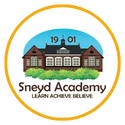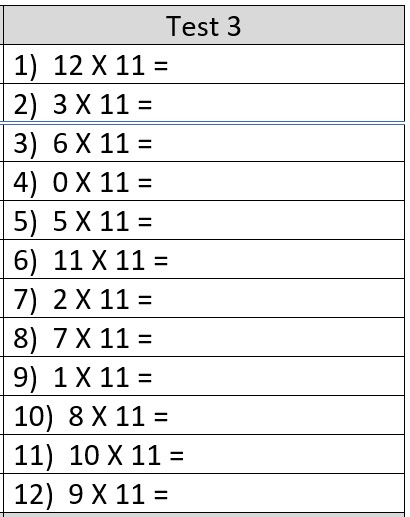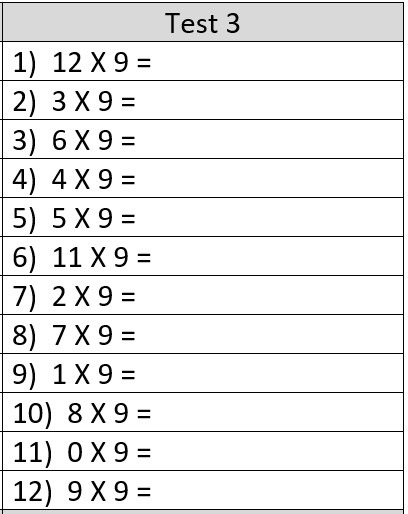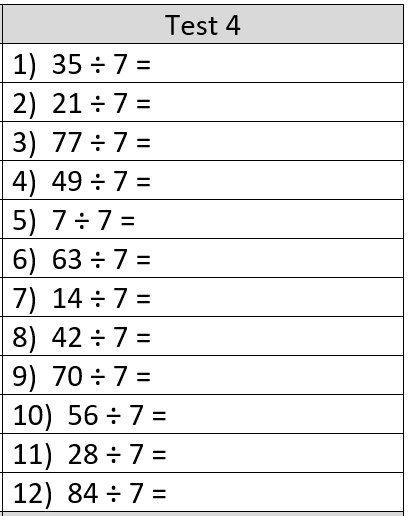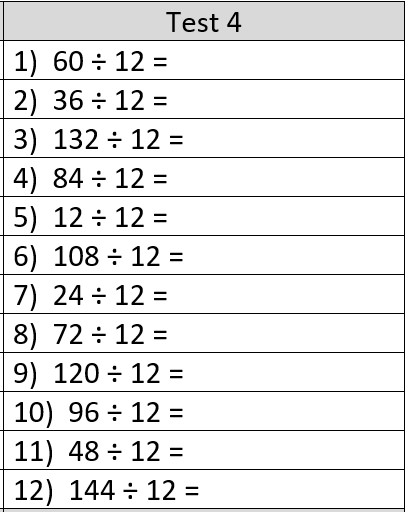Year 4 Mathematics
Curriculum Overview
The mathematics curriculum in Year 4 extends to teaching competent use of numbers to 10,000. Formal calculations are introduced for all four operations (addition, subtraction, multiplication and division.) By the end of Year 4 children will be able to add and subtract 4 digit numbers, divide 4 digit numbers by one digit numbers and multiply four digit numbers by one digit numbers. The Year 4 curriculum introduces the concept of rounding numbers and also is the first time that children will come across a negative number scale.
In Year 4, children will learn their final multiplication tables (11, 9, 7 and 12) and by the end of the year will be expected to be able to recall, quickly by heart, all multiplication and division facts up to 12 x 12. There will be an assessment of this knowledge near the end of the year which is completed on electronic tablets. Within this assessment – the Multiplication Tables Check (MTC) – there are 25 multiplication table questions, asked from any of the 12 tables. Children are expected to answer each question within 6 seconds. Information from these assessments is reported to parents and the DFE and is used to identify children who have not yet secured and retained sufficient multiplication tables knowledge.
Below are the National Curriculum objectives which are covered in Year 4.
Year 4 Statutory Requirements
|
NUMBER – NUMBER & PLACE VALUE
- Count in multiples of 6, 7, 9, 25 and 1000
- Find 1000 more or less than a given number
- Count backwards through zero to include negative numbers
- Recognise the place value of each digit in a four-digit number (thousands, hundreds, tens, and ones)
- Order and compare numbers beyond 1000
- Identify, represent and estimate numbers using different representations
- Round any number to the nearest 10, 100 or 1000
- Solve number and practical problems that involve all of the above and with increasingly large positive numbers
- Read Roman numerals to 100 (I to C) and know that over time, the numeral system changed to include the concept of zero and place value.
|
NUMBER – ADDITION & SUBTRACTION
- Add and subtract numbers with up to 4 digits using the formal written methods of columnar addition and subtraction where appropriate
- Estimate and use inverse operations to check answers to a calculation
- Solve addition and subtraction two-step problems in contexts, deciding which operations and methods to use and why.
|
NUMBER – MULTIPLICATION & DIVISION
- Recall multiplication and division facts for multiplication tables up to 12 × 12
- Use place value, known and derived facts to multiply and divide mentally, including: multiplying by 0 and 1; dividing by 1; multiplying together three numbers
- Recognise and use factor pairs and commutativity in mental calculations
- Multiply two-digit and three-digit numbers by a one-digit number using formal written layout
- Solve problems involving multiplying and adding, including using the distributive law to multiply two digit numbers by one digit, integer scaling problems and harder correspondence problems such as n objects are connected to m objects.
|
NUMBER – FRACTIONS (including decimals)
- Recognise and show, using diagrams, families of common equivalent fractions
- Count up and down in hundredths; recognise that hundredths arise when dividing an object by one hundred and dividing tenths by ten.
- Solve problems involving increasingly harder fractions to calculate quantities, and fractions to divide quantities, including non-unit fractions where the answer is a whole number
- Add and subtract fractions with the same denominator
- Recognise and write decimal equivalents of any number of tenths or hundredths
- Recognise and write decimal equivalents to ¼, ½, ¾
- Find the effect of dividing a one- or two-digit number by 10 and 100, identifying the value of the digits in the answer as ones, tenths and hundredths
- Round decimals with one decimal place to the nearest whole number
- Compare numbers with the same number of decimal places up to two decimal places
- Solve simple measure and money problems involving fractions and decimals to two decimal places.
|
MEASUREMENT
- Convert between different units of measure [for example, kilometre to metre; hour to minute]
- Measure and calculate the perimeter of a rectilinear figure (including squares) in centimetres and metres
- Find the area of rectilinear shapes by counting squares
- Estimate, compare and calculate different measures, including money in pounds and pence
|
GEOMETRY – PROPERTIES OF SHAPES
- Compare and classify geometric shapes, including quadrilaterals and triangles,based on their properties and sizes
- Identify acute and obtuse angles and compare and order angles up to two right angles by size
- Identify lines of symmetry in 2-D shapes presented in different orientations
- Complete a simple symmetric figure with respect to a specific line of symmetry.
|
GEOMETRY – POSITION & DIRECTION
- Describe positions on a 2-D grid as coordinates in the first quadrant
- Describe movements between positions as translations of a given unit to the left/right and up/down
- Plot specified points and draw sides to complete a given polygon.
|
STATISTICS
- Interpret and present discrete and continuous data using appropriate graphical methods, including bar charts and time graphs.
- Solve comparison, sum and difference problems using information presented in bar charts, pictograms, tables and other graphs.
|
White Rose
As an academy we structure the delivery of the national curriculum in the order set out by the White Rose and we use a great many of their resources such as the ‘small steps’ to support this delivery. The timetable shows the order in which units of work are taught. Please click here.
Marvellous Multiplications
The Marvellous Multiplication system is a structured system that we use at Sneyd Academy to support children in learning multiplication tables by heart. The system uses a variety of active teaching techniques alongside regular opportunities to rehearse multiplication tables so children become familiar with all multiplication and division facts for each multiplication table. By the end of Year 4 children are expected to know the multiplication and division facts for the 10, 5, 2, 3, 4, 6, 8, 7, 9, 11 and 12 times tables by heart.
Marvellous Multiplications are tested each week within Big Maths sessions. Examples of tests are below. Children are given 60 seconds to complete each test.

